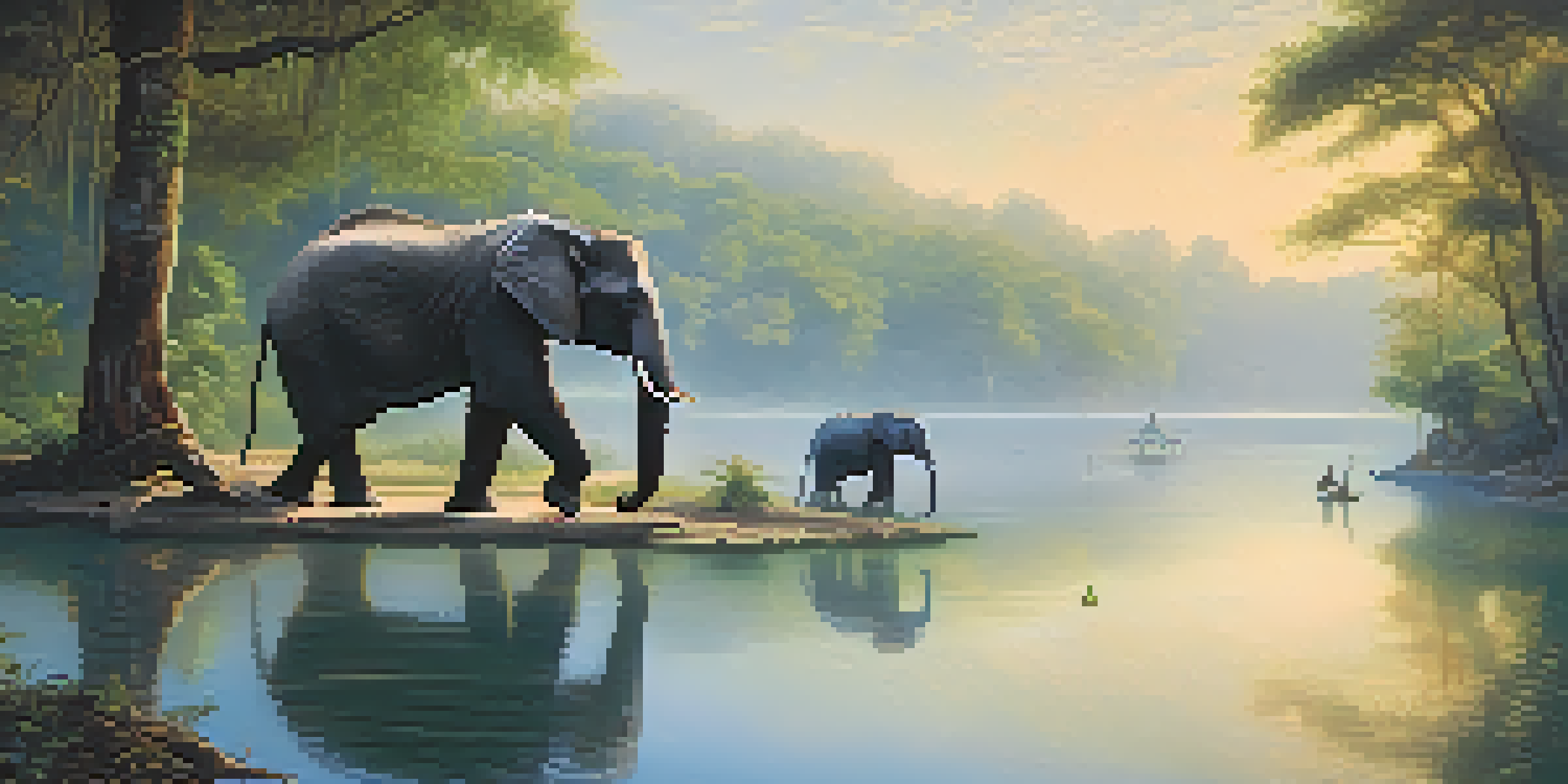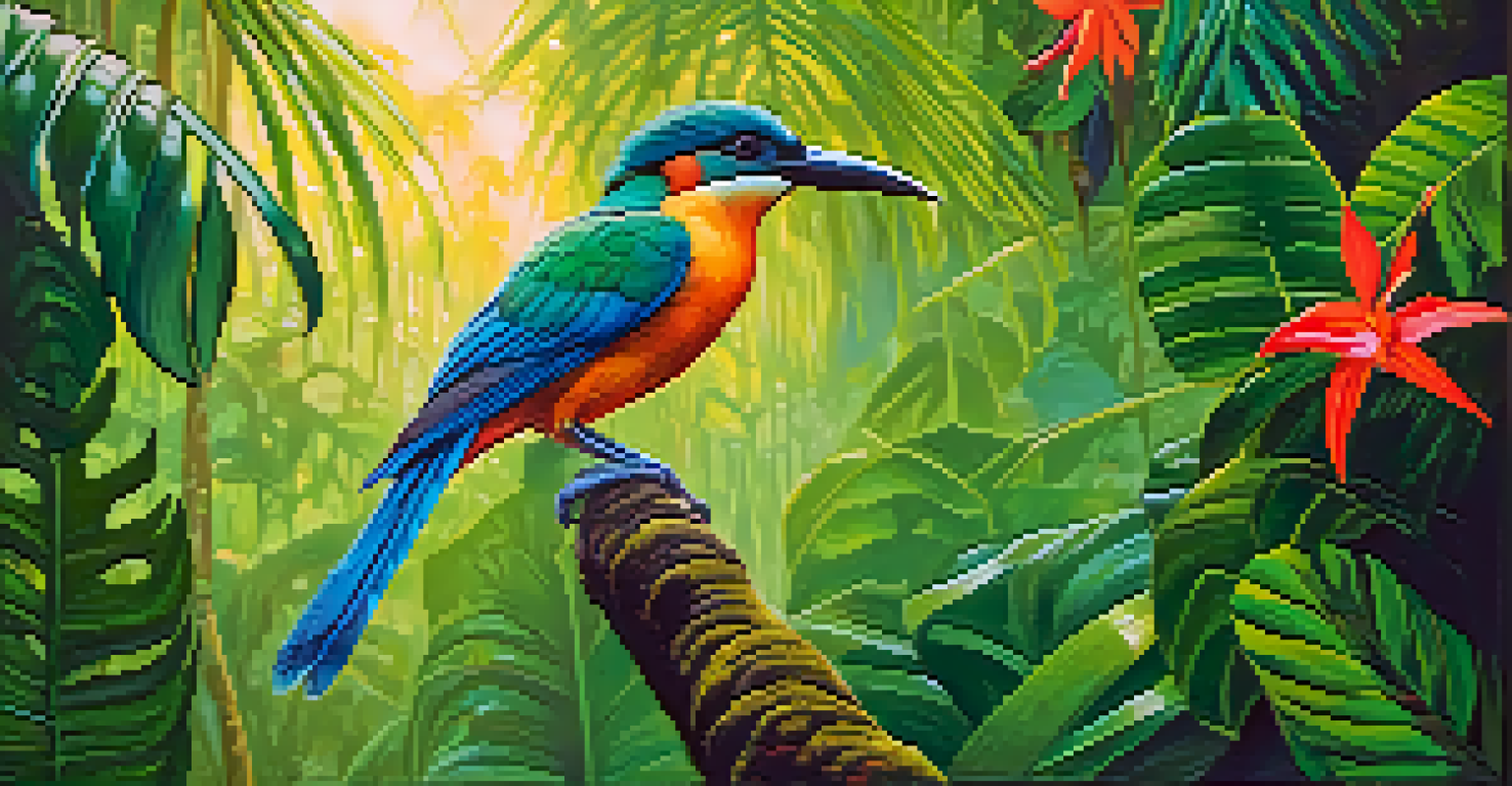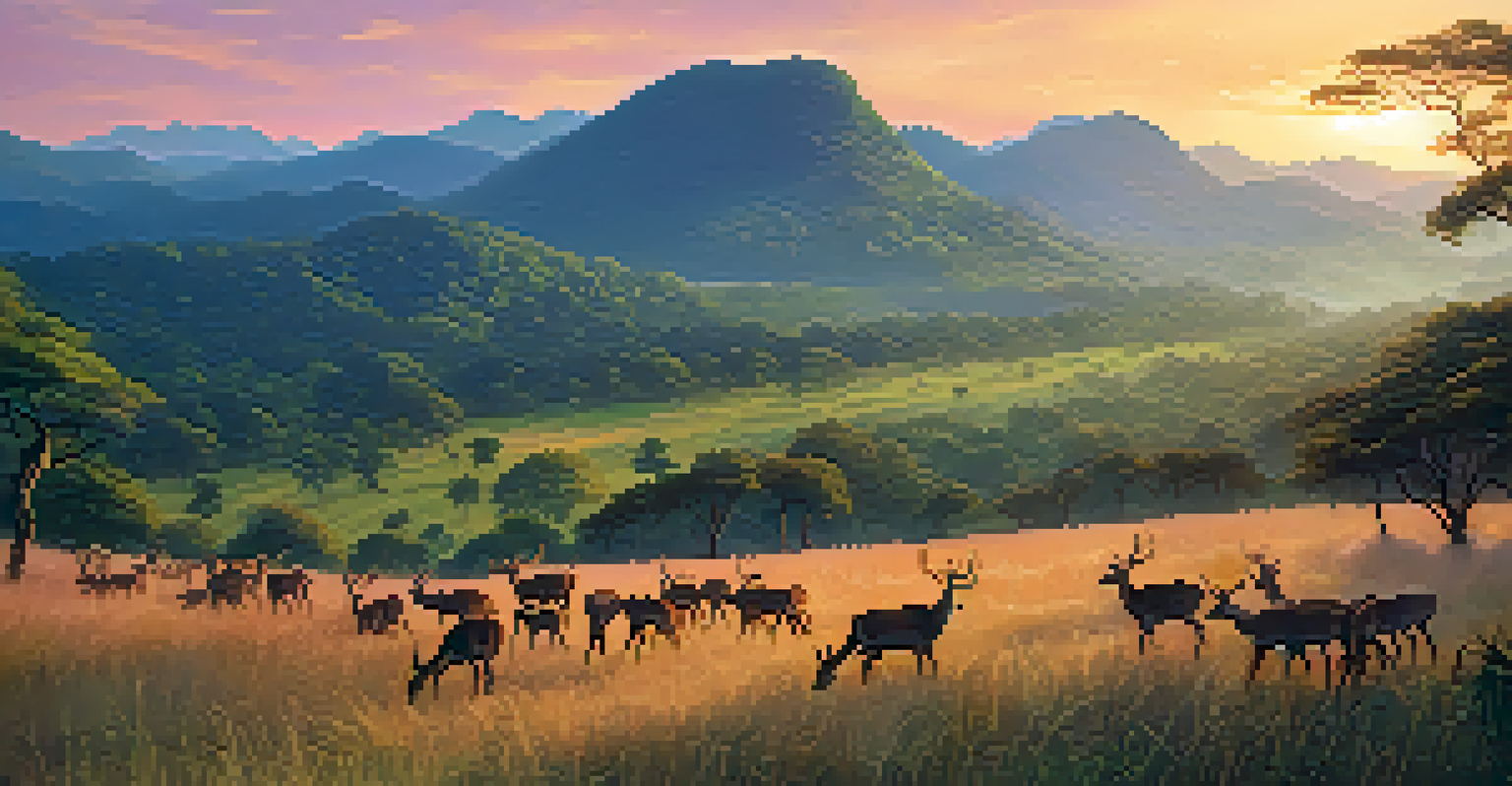Wildlife Photography in Thailand: Capturing Nature's Beauty

The Allure of Thailand's Diverse Wildlife
Thailand is a treasure trove of biodiversity, attracting wildlife enthusiasts and photographers from around the globe. From the lush jungles of Chiang Mai to the stunning beaches of Krabi, the country boasts an array of ecosystems that house unique species. This incredible variety not only makes for captivating photographs but also offers a chance to connect with nature in its purest form.
In every walk with nature one receives far more than he seeks.
Imagine standing at the edge of a serene lake, the morning mist rising as you catch a glimpse of a majestic elephant or a playful gibbon swinging through the trees. These moments are what make wildlife photography in Thailand truly special. Each region presents its own set of challenges and rewards, making every expedition an adventure.
Whether you're aiming to photograph elusive tigers in Khao Sok National Park or vibrant birds in Doi Inthanon, the opportunities are endless. Embracing the diversity of wildlife here will surely enrich your photographic journey, as you capture the essence of nature in all its glory.
Best Locations for Wildlife Photography in Thailand
Thailand is dotted with national parks and reserves that serve as perfect backdrops for wildlife photography. Some of the most renowned spots include Khao Yai National Park, known for its rich flora and fauna, and Kaeng Krachan National Park, the largest in the country. Each location offers unique opportunities to capture stunning images, whether it’s a close-up of a rare bird or a sweeping landscape filled with wildlife.

In addition to the national parks, there are also wildlife sanctuaries like the Elephant Nature Park in Chiang Mai. Here, you can photograph elephants in a responsible and ethical environment, which enhances your experience and provides a deeper understanding of these magnificent creatures. It's a win-win situation as you get to take incredible photos while supporting wildlife conservation.
Thailand's Wildlife Photography Hotspots
Explore diverse national parks and wildlife sanctuaries across Thailand for captivating wildlife photography opportunities.
Exploring these locations not only helps you improve your photography skills but also allows you to appreciate the beauty of Thailand’s nature. With each click of the shutter, you’re not just capturing an image; you’re telling a story of the wild that thrives in this beautiful country.
Essential Gear for Wildlife Photography
Having the right gear is crucial for wildlife photography, especially in a diverse ecosystem like Thailand. A good camera with fast autofocus capabilities can make a world of difference when trying to capture a fleeting moment, like a bird taking flight or a tiger prowling through the underbrush. Pairing your camera with a versatile zoom lens will allow you to shoot from a distance without disturbing the animals.
The earth has music for those who listen.
In addition to your camera and lens, consider bringing a sturdy tripod for stability and a comfortable backpack to carry all your essentials. A good pair of binoculars can also enhance your experience, helping you spot wildlife before they come into view. Remember, the right equipment can help you seize those magical moments that make your photos stand out.
Lastly, don’t forget about extra batteries and memory cards! Wildlife photography often involves long waits and unpredictable moments, so being prepared ensures you're ready to capture that perfect shot whenever it happens.
Timing Your Shots: Best Seasons for Wildlife Photography
Timing plays a pivotal role in wildlife photography, and Thailand offers various seasons that affect animal behavior and visibility. The cool, dry season from November to February is often considered the best time for photography, as animals are more active and easier to spot. This is particularly true in national parks where you can witness migratory birds and playful mammals.
The wet season, on the other hand, can present unique opportunities for stunning landscapes and dramatic skies. While some animals may be harder to find, the lush greenery and vibrant colors during this time can lead to breathtaking photographs. Embrace the unpredictability of nature and be prepared for different scenarios as they unfold.
Essential Gear for Wildlife Shoots
Having the right camera equipment and accessories is crucial for capturing stunning wildlife photos in Thailand's rich ecosystems.
Ultimately, your success in capturing wildlife will depend on your patience and adaptability. Understanding the seasonal patterns of the animals you wish to photograph will help you plan your trips effectively and make the most of your time in the field.
Ethical Wildlife Photography Practices
As wildlife photographers, it’s essential to prioritize ethical practices that respect the animals and their habitats. Always maintain a safe distance from wildlife to avoid causing stress or disruption to their natural behaviors. Using a zoom lens allows you to get close-up shots without intruding on their space.
Additionally, be mindful of the environment around you. Stick to established paths and avoid trampling on sensitive vegetation. Leave no trace behind, ensuring that the pristine beauty of Thailand’s nature remains for future visitors and photographers to enjoy.
By adhering to ethical guidelines, you not only protect wildlife but also foster a positive relationship between humans and nature. This respect will enhance your photography experience, as you witness animals behaving naturally without the influence of human interference.
Tips for Capturing Stunning Wildlife Photos
To capture breathtaking wildlife photos, consider the golden hours of photography: early morning and late afternoon. During these times, the soft, diffused light creates beautiful shadows and highlights that enhance your images. This is also when animals are most active, offering you the best chance to snap that perfect shot.
Another key tip is to focus on the eyes of your subjects. The eyes are often the focal point of any photograph, and capturing them in sharp detail can evoke emotion and connection in your images. Whether it’s a curious monkey or a regal bird, sharp eyes can bring your photos to life.
Ethical Practices in Wildlife Photography
Prioritizing ethical practices ensures respect for wildlife and their habitats, enhancing both your photography experience and conservation efforts.
Lastly, don’t forget to experiment with different angles and compositions. Get low to the ground or find a higher vantage point to add depth and interest to your shots. The more creative you get with your photography, the more unique and memorable your wildlife images will be.
Editing and Showcasing Your Wildlife Photography
Once you've captured those stunning wildlife images, the next step is editing. Using software like Adobe Lightroom or Photoshop can help enhance your photos further, allowing you to adjust lighting, contrast, and colors to make your images pop. Remember to keep edits natural, as over-processing can detract from the beauty of the original shot.
After editing, consider how you want to showcase your work. Creating a portfolio or sharing your images on social media can help you connect with fellow wildlife enthusiasts and photographers. Platforms like Instagram and photography blogs are great places to share your adventures and inspire others to appreciate the beauty of Thailand’s wildlife.

Lastly, consider entering photography competitions or exhibiting your work in local galleries. Not only does this provide recognition for your efforts, but it also contributes to wildlife conservation efforts by raising awareness through your art.